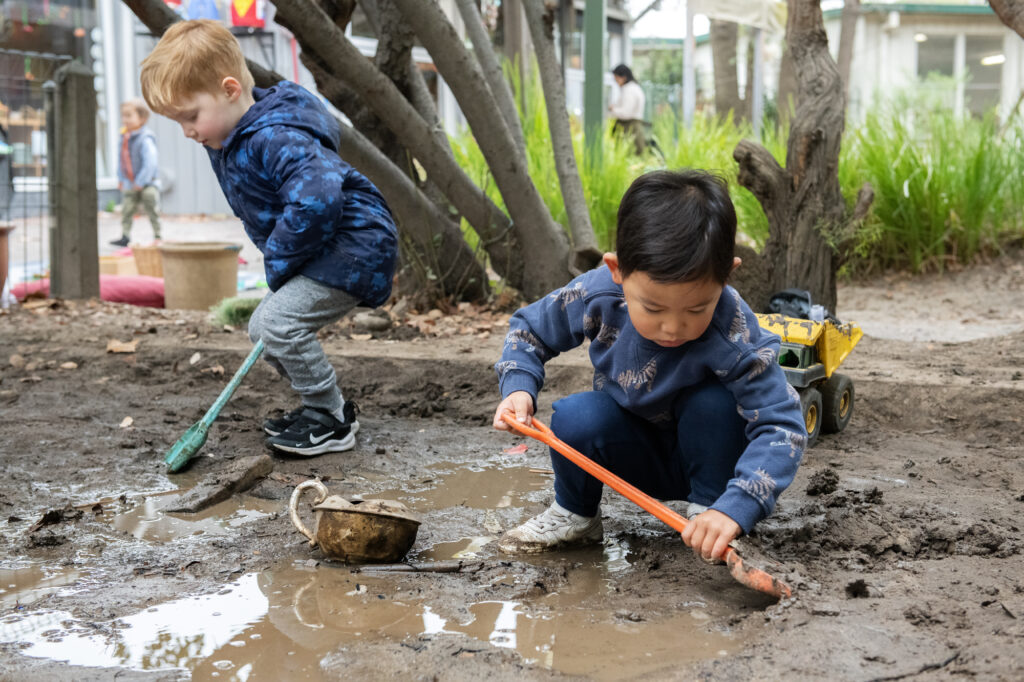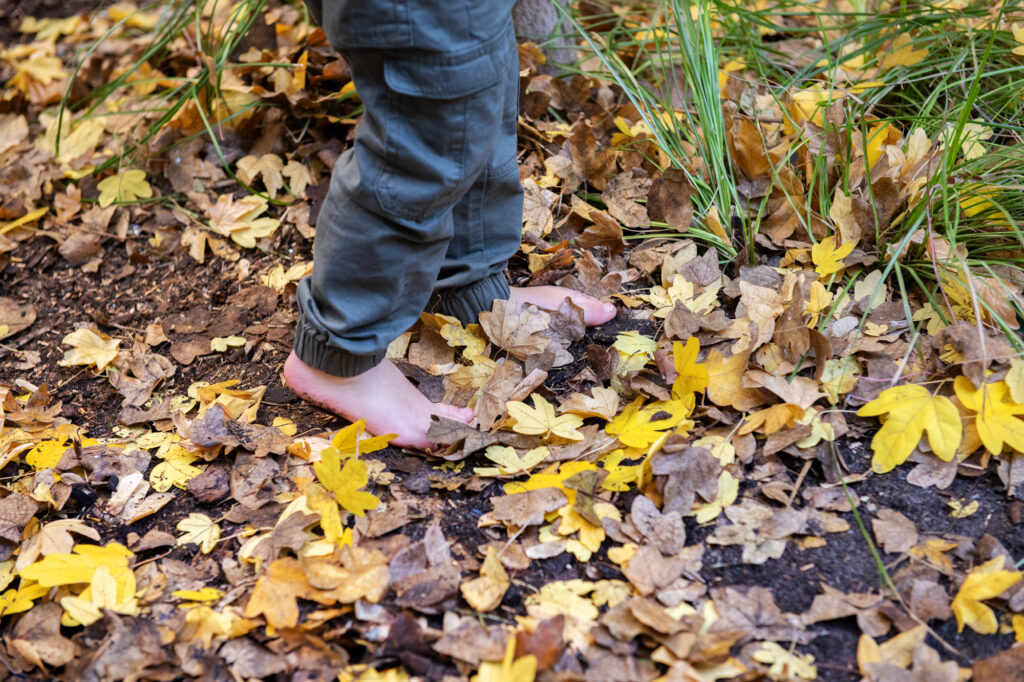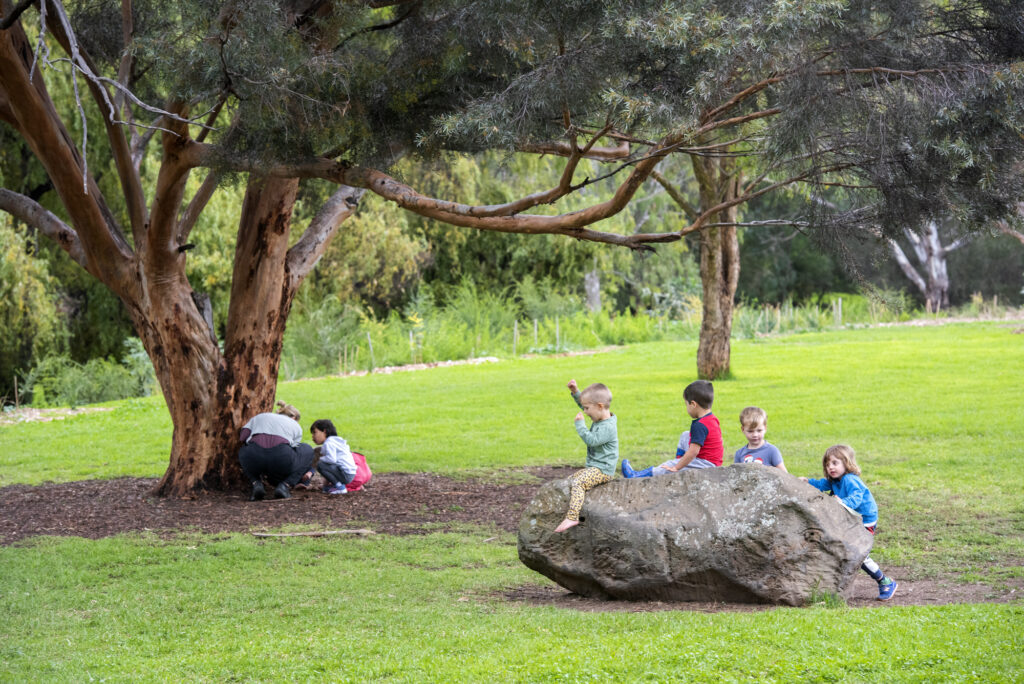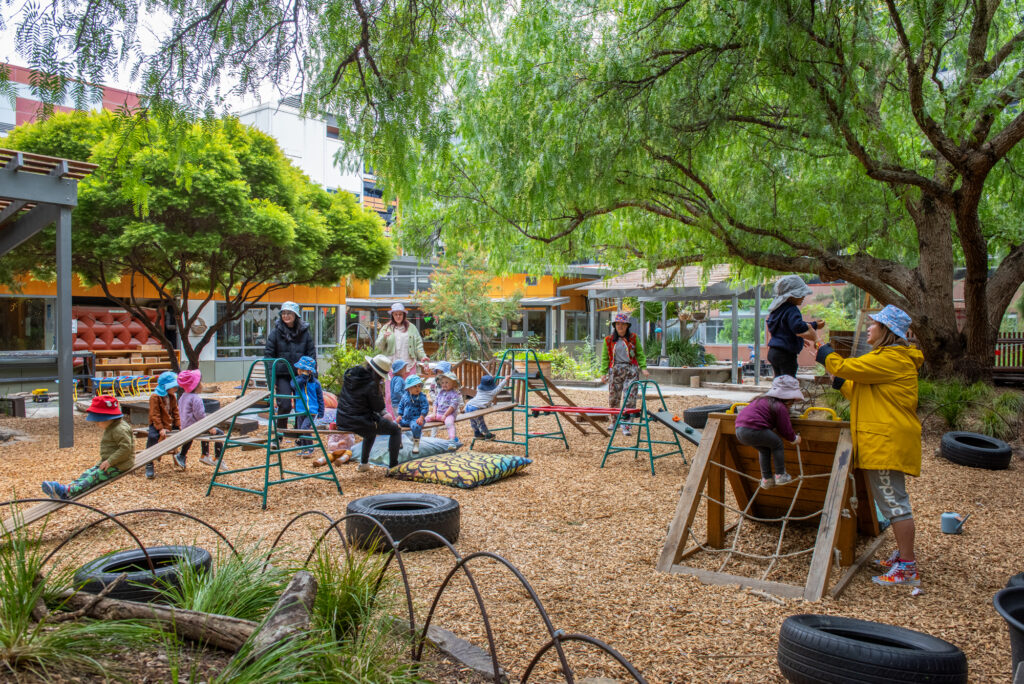As the weather warms you may be thinking now is the best time for your children to play outside. But did you know, playing outdoors in all seasons is good for a child’s development? We explore five reasons why.
Outdoor play is a crucial part of a child’s development. Whether it is a crisp winter’s day or a sunny summer afternoon, getting outdoors in any season provides benefits for children and the way they interact with and make sense of the environment and world they live in. Here’s five reasons why embracing outdoor play year-round is so important.
It boosts physical development
Children are natural movers, and outdoor play gives them plenty of space to crawl, walk, jump and run. Our Kirrip room at The Harbour enrols children from birth – three and as such the children are at different stages of physical development. The outdoor space is always open and offers a range of possibilities to enhance children’s gross motor skills and coordination. Children throw and roll balls, ride bikes, dig in the sandpit, and crawl, walks and run around the space. The variety of surfaces and obstacles helps children test their balance and strength in ways they can’t indoors, for example, children crawl and climb over rocks and logs. This uneven surface encourages children’s feet to flex, bend, and grip as they navigate the challenges. Children extend their balance across these spaces and build upper body strength pulling themselves up and over. The variety of surfaces means children face a multitude of challenges, rather than on static climbing equipment which is the same each time they encounter it.
It enhances sensory exploration
Being outdoors stimulates all the senses. For children, the crunch of leaves, the feel of sand slipping through their fingers, and the coolness of river stones offer textures and experiences that indoor toys do not provide. This sensory exploration is important for brain development and helps babies and children learn about the environment they live in in a hands-on way. Recently the children have been noticing the blooming wattle. Children look up at the wattle from their position on the ground, strengthening eye muscles as they focus on far-away subjects. Educators encourage children to focus their attention on line-of-sight, as they point and children follow their gaze. Educators support children in accessing the wattle for touch and smell, and look out for fallen twigs to hold, smell, swish, rub and crunch.
It supports their immune system health
Playing outdoors doesn’t just make our children stronger – it helps them stay healthier, too. Research shows that spending time in nature can reduce the chances of your child developing asthma, hayfever, and other allergies. The variety of natural elements they’re exposed to helps their immune system become stronger, making them better prepared should they be exposed to common sickness. (Frei, Heye and Roduit, 2022). According to an article by the BBC, playing in mud exposes children to a variety of microorganisms, which helps strengthen their immune systems and reduces the risk of allergies and infections. This natural exposure trains their immune responses, leading to better overall health and resilience.
It encourages social skills
Outdoor play often involves group activities that teach children about sharing, cooperation, and problem-solving. Whether it’s running around together, taking turns on the climbing equipment, or engaging in dramatic play with mud, children learn to navigate social interactions and develop important teamwork skills. In our Kirrip room, we see this every day as children collaborate and create their own fun. At our Clare Court service children spend time in the adjacent parklands and children are regularly seen and heard negotiating with each other about how to balance and take turns hopping from rock to rock. Children are quick to provide positive encouragement to their peers which builds confidence.
It fosters a love for nature
When children play outside regularly, they build lifelong appreciation for nature. Exploring different seasons and weather conditions helps them understand the changing world around them. Clay is a natural resource that comes from the land, with children at Carlton North exploring its texture and where it comes from. This connection to the environment not only makes them more aware of their surrounding but also instils a respect for nature that can last a lifetime. At The Harbour, we know the value of our outdoor space in this community. Being in an inner-city urban environment, children’s ability to access a natural space on a day-to-day basis can be limited. Here, children enter an oasis of mature trees, rockeries, water, sand, dirt – which has become a rarity in the Early Childhood Education and Care sector. In an increasingly digital word, we know how truly lucky our children are to have access to this incredible space all day and every day at The Harbour.
So, next time it’s a little chilly or wet outside, don’t be afraid to let your children play outside. Remember to prepare them with weather-appropriate clothing such as a raincoat and gumboots, or sun-smart clothing such as hats and long sleeve tops for summer. Embracing the outdoors all year round isn’t just fun – it’s great for your child’s growing mind and body!



